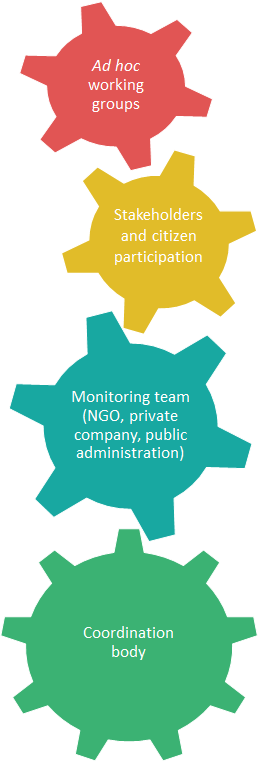Management team
A general system approach to manage the CWR outside a PAs occurring within a coordination unit (e.g. country, province or region) is highly recommended. The general competencies of team members could be enriched with experts in land stewardships, collective payments, agri-environmental schemes and more generally in stakeholder involvement and citizen participation.

If the population is healthy (most common scenario):
The only required management intervention is monitoring surveys to check population status and trends and react in case of land use change and/or any environmental change. The management team can be reduced to a regional coordinator (or coordination body) and a monitoring team.
If more extensive monitoring is required:
A private company or public administration may need to undertake the task. Such a team should have a flexibility to create ad hoc working groups to respond to emerging local threats to CWR diversity. It is also especially important to include tasks focused on knowledge dissemination, networking between landowners, joint search of funding opportunities, sharing best management practices and regional CWR inventories.
This management cooperation might be more effective when the created networks are devoted to conservation of particular groups of species, characterized with similar ecological and management requirements (for example the Wild Celery Network in Germany). Here a coordination unit researches celery species, collects and shares information and connects local stakeholders as a foundation for conservation. Additional useful information about various aspects of planning and management in nature conservation can be found in online Eurosite Management Toolkit.